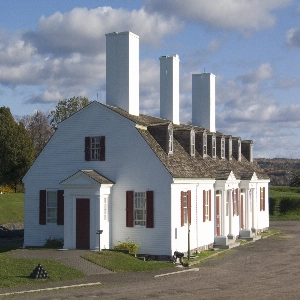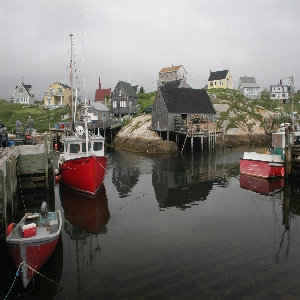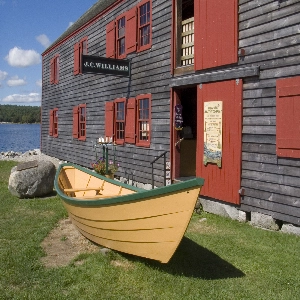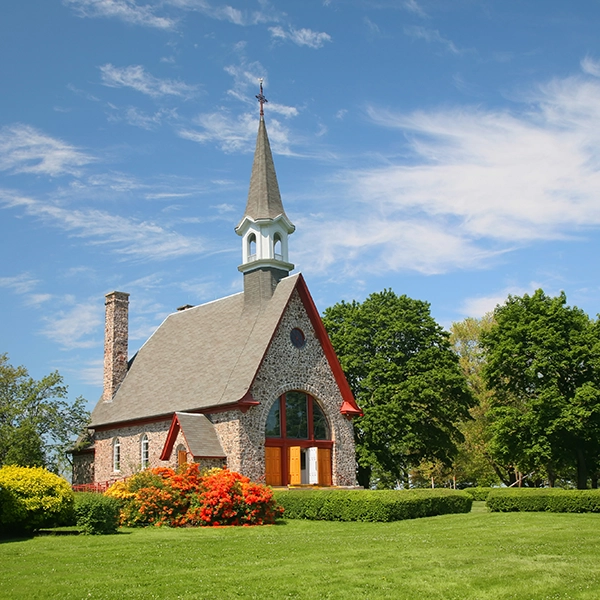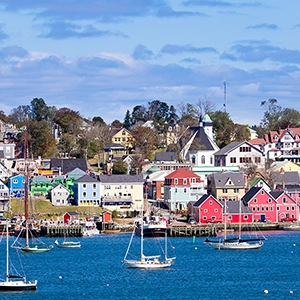Discover Louisbourg Nova Scotia: A Glimpse Into Canada's Rich History

Located on the Eastern coast of Cape Breton Island in Nova Scotia, Louisbourg is a historically significant site that has been the scene of key events in the history of New France, the British Empire, and North America. The Fortress of Louisbourg, a National Historic Site, stands today as a testament to the early European colonial powers' struggle for supremacy. This article delves into the rich history of Louisbourg, unraveling the political, economic, military, and day-to-day aspects of life within the fortress.
A Brief History of Louisbourg
The area surrounding Louisbourg was first inhabited by the indigenous Mi'kmaq people. The French established a small settlement in the area, naming it ‘Louisbourg’ in 1713, after the reigning King Louis XIV. The settlement's importance grew due to its prime location on the Atlantic coast and access to important fishing grounds in the Grand Banks. In addition, the city served as a military base that guarded New France from British attacks. The settlement prospered through fishing, trade, and an influx of French refugees from Acadia. Louisbourg rapidly became a thriving city, and by the 1740s, the population had swelled to over 4,000 residents, making it the third-largest French settlement in North America.
Design and Construction of the Fortress
Recognizing the importance of Louisbourg's strategic position, the French government began the construction of a fortress in 1719. This massive undertaking was partly financed by France and partly by the settlers who were required to contribute to its construction. Designed by French military engineers, the fortress was meant to protect the city and its vital economic interests in the fishery and transatlantic trade. The finished structure was a marvel of the time, featuring stone ramparts, heavy artillery, moats, drawbridges, and multiple protective walls. The Fortress of Louisbourg was considered the most formidable stronghold in North America and a symbol of French imperial power.
Trade and Economy
Louisbourg's economy was primarily driven by the lucrative fishery industry, which provided food for the soldiers, settlers, and slaves. Besides fishing, the city also played a significant role in the trade between France and its colonies. Louisbourg acted as a nexus point for goods from France, New France, the West Indies, and Atlantic Canada. The city's deep harbor allowed for easy access to the sea and its abundant resources. These factors contributed to the growth of a bustling and dynamic community within the fortress, including merchants, blacksmiths, laborers, and many others.
Religion and Society
Like most French colonies, Louisbourg was dominated by the Catholic Church, which played a pivotal role in the lives of its citizens. The Church provided spiritual guidance, education, and charity services, and maintained detailed records of births, marriages, and deaths. In addition to the Church, there were several religious orders and convents present within the fortress. The city was largely segregated by social class, race, and ethnicity, with various sections for the French elite, merchants, military personnel, and slaves. Louisbourg was a highly diverse and cosmopolitan city, with a mix of French, indigenous, and enslaved African populations living within the fortress.
Military Importance
Aside from its economic role, Louisbourg served as a crucial French military base in North America. The British viewed the fortress as a significant threat to their colonial interests due to its strategic position on the Atlantic trade routes. The increasing Anglo-French rivalry culminated in the two Siege of Louisbourg days, which occurred in 1745 and 1758, respectively. Both sieges played a pivotal role in shaping the history of the fortress and the broader geopolitical context of North America.
The First Siege of Louisbourg (1745)
During the War of the Austrian Succession (1744-1748), New England's British colonies launched a surprising attack on Louisbourg. A force of over 4,000 men and a sizable naval fleet under the command of British officers captured the fortress after a 47-day siege. After the war, Britain returned the fortress to France as part of the Treaty of Aix-la-Chapelle (1748). The French regained control of Louisbourg, and its defenses were significantly strengthened in anticipation of future British attacks.
The Second Siege of Louisbourg (1758)
In the course of the Seven Years' War (1756-1763), the British, once again, targeted Louisbourg. A formidable Anglo-American force led by General Jeffery Amherst and Admiral Edward Boscawen assaulted the fortress, this time accomplishing a swift victory. The French defenders surrendered after only 11 days, primarily due to the effective British naval blockade and bombardment. After the capture of Louisbourg, British engineers carried out a systematic destruction of the fortress, ensuring that it would never again pose a threat to the British colonies.
Preservation and Restoration
In 1961, the Canadian government funded a significant project to partially restore the Fortress of Louisbourg. Today, it stands as the largest reconstruction project in North America, providing a glimpse into the lifestyle and culture of an 18th-century French colonial city. With its painstakingly recreated buildings, artifacts and historical interpreters, the Fortress of Louisbourg National Historic Site allows visitors to step back in time and experience the rich history of this once-great fortress.
The story of Louisbourg is a chronicle of early colonial American history, war, trade, and cultural diversity. A visit to the Fortress of Louisbourg National Historic Site allows us to connect with the past and appreciate the struggles and triumphs experienced by those who called this celebrated site their home. The history, beauty, and complexity of Louisbourg make it a must-see destination for anyone interested in exploring North America's rich colonial history.

